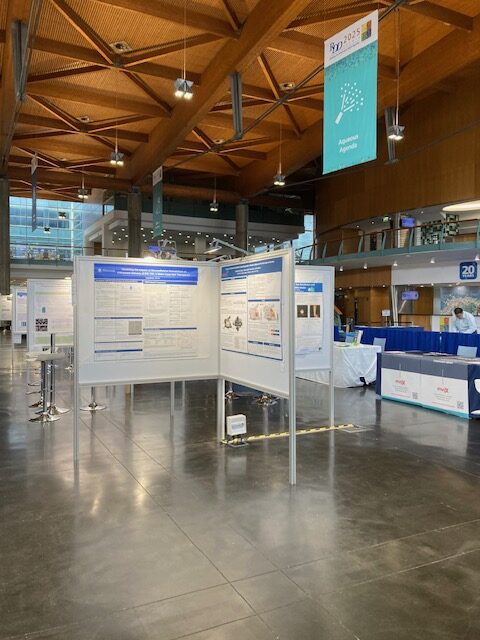Two of the posters presented during the Posters on the Podium session related to efforts to more realistic airway models. Mahsa Jahed of Lakehead University described her use of a CFD model developed from a CT scan of a COPD patient’s airway connected to a VCU mouth-throat and using COPD patient breathing pattern to study how movement of airway walls during inhalation affects airflow and regional deposition. Her poster, “Effects of Airway Wall Dynamics During Inhalation on Drug Delivery via Pressurized Metered Dose Inhalers Using Patient-Specific Airway Models,” presented data showing reduced deposition for dynamic airway walls compared to rigid walls as well as differences in airflow dynamics.
Peter Di Palma, a master’s student at the University of Toronto, presented his work on “A Comparison of Particle Dynamics within Several Airway Models using Phase Doppler Anemometry” which examined differences in aerosol transport in several mouth-throat models with different geometries. Di Palma compared the USP, Alberta Idealized Throat and VCU models and found differences in particle size distribution and velocity profile, as well as differences in sensitivity to flow rate, suggesting the importance of features such as larynx geometry in such models.
In the workshops session, Proveris Scientific offered a presentation on the “Emerging Role of Nasal Casts and Automation for the In Vitro Evaluation of Nasal Drug Products.” which discussed development of a “realistic anatomically correct silicone nasal cast” among other topics. Aptar Pharma and Pulmotree, which are partnered on development of nebulized products using Pulmotree’s Kolibri platform, presented a workshop titled, “Ready for Clinical Trials in 1 Hour: A Roadmap to Success,” which included a section on Aptar subsidiary Nanopharm’s Simhalation PBPK model, for which the company recently announced a clinical validation study.
Companies that exhibited at RDD 2025 included:



